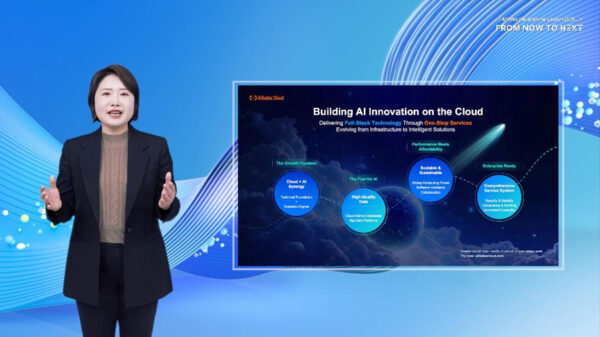Fortinet announced the latest semiannual Global Threat Landscape Report from FortiGuard Labs. The threat landscape and organizations’ attack surface are constantly transforming, and cybercriminals’ ability to design and adapt their techniques to suit this evolving environment continues to pose significant risk to businesses of all sizes, regardless of industry or geography.
For a detailed view of the report, as well as some important takeaways, read the blog.
Highlights of the 2H 2022 report follow:
- The mass distribution of wiper malware continues to showcase the destructive evolution of cyberattacks.
- New intelligence allows CISOs to prioritize risk mitigation efforts and minimize the active attack surface with the expansion of the “Red Zone” approach.
- Ransomware threats remain at peak levels with no evidence of slowing down globally with new variants enabled by Ransomware-as-a-Service (RaaS).
- The most prevalent malware was more than a year old and had gone through a large amount of speciation, highlighting the efficacy and economics of reusing and recycling code.
- Log4j continues to impact organizations in all regions and industries, most notably across technology, government, and education.
Destructive APT-like Wiper Malware Spreads Wide in 2022
Analyzing wiper malware data reveals a trend of cyber adversaries consistently using destructive attack techniques against their targets. It also shows that with the lack of borders on the internet, cyber adversaries can easily scale these types of attacks which have been largely enabled by the Cybercrime-as-a-Service (CaaS) model.
In early 2022, FortiGuard Labs reported the presence of several new wipers in parallel with the Russia-Ukraine war. Later in the year, wiper malware expanded into other countries, fueling a 53% increase in wiper activity from Q3 to Q4 alone. While some of this activity was enabled by wiper malware that may have been initially developed and deployed by nation-state actors surrounding the war, it is being picked up by cybercriminal groups and is spreading beyond just Europe. Unfortunately, the trajectory of destructive wiper malware does not appear to be slowing any time soon based on the activity volume seen in Q4, which means any organization remains a potential target, not just organizations based in the Ukraine or surrounding countries.
Mapping CVEs Reveals Vulnerability Red Zone to Help CISOs Prioritize
Exploit trends help show what cybercriminals are interested in attacking, probing for future attacks, and are actively targeting. FortiGuard Labs has an extensive archive of known vulnerabilities, and through data enrichment was able to identify actively exploited vulnerabilities in real time and map zones of active risk across the attack surface.
In the second half of 2022, less than 1% of the total observed vulnerabilities discovered in an enterprise-size organization were on endpoints and actively under attack, giving CISOs a clear view of the Red Zone through intelligence of the active attack surface that they should prioritize efforts to minimize their risk and where to focus patching efforts.
Financially Motivated Cybercrime and Ransomware Threat Holding at Peak Levels
FortiGuard Labs Incident Response (IR) engagements found that financially motivated cybercrime resulted in the highest volume of incidents (73.9%), with a distant second attributed to espionage (13%). In all of 2022, 82% of financially motivated cybercrime involved the employment of ransomware or malicious scripts, showing that the global ransomware threat remains in full force with no evidence of slowing down thanks to the growing popularity of Ransomware-as-a-Service (RaaS) on the dark web.
In fact, ransomware volume increased 16% from the first half of 2022. Out of a total of 99 observed ransomware families, the top five families accounted for roughly 37% of all ransomware activity during the second half of 2022. GandCrab, a RaaS malware that emerged in 2018, was at the top of the list. Although the criminals behind GandCrab announced that they were retiring after making over $2 billion in profits, there were many iterations of GandCrab during its active time. It is possible that the long-tail legacy of this criminal group is still perpetuating, or the code has simply been built upon, changed, and re-released, demonstrating the importance of global partnerships across all types of organizations to permanently dismantle criminal operations. Effectively disrupting cybercriminal supply chains requires a global group effort with strong, trusted relationships and collaboration among cybersecurity stakeholders across public and private organizations and industries.
Adversary Code Reuse Showcases the Resourceful Nature of Adversaries
Cyber adversaries are enterprising in nature and always looking to maximize existing investments and knowledge to make their attack efforts more effective and profitable. Code reuse is an efficient and lucrative way for cybercriminals to build upon successful outcomes while making iterative changes to fine-tune their attacks and overcome defensive obstacles.
When FortiGuard Labs analyzed the most prevalent malware for the second half of 2022, the majority of the top spots were held by malware that was more than one year old. FortiGuard Labs further examined a collection of different Emotet variants to analyze their tendency to borrow and reuse code. The research showed that Emotet has gone through significant speciation with variants breaking into roughly six different “species” of malware. Cyber adversaries are not just automating threats but actively retrofitting code to make it even more effective.
Older Botnet Resurrection Demonstrates the Resiliency of Adversarial Supply Chains
In addition to code reuse, adversaries are also leveraging existing infrastructure and older threats to maximize opportunity. When examining botnet threats by prevalence, FortiGuard Labs discovered that many of the top botnets are not new. For example, the Morto botnet, which was first observed in 2011, surged in late 2022. And others like Mirai and Gh0st.Rat continue to be prevalent across all regions. Surprisingly, out of the top five observed botnets, only RotaJakiro is from this decade.
Although it may be tempting to write off older threats as past history, organizations across any sector must continue to stay vigilant. These “vintage” botnets are still pervasive for a reason: They are still very effective. Resourceful cybercriminals will continue to leverage existing botnet infrastructure and evolve it into increasingly persistent versions with highly specialized techniques because the ROI is there. Specifically, in the second half of 2022, significant targets of Mirai included managed security service providers (MSSPs), the telco/carrier sector, and the manufacturing sector, which is known for its pervasive operational technology (OT). Cybercriminals are making a concerted effort to target those industries with proven methods.
Log4j Remains Widespread and Targeted by Cybercriminals
Even with all the publicity that Log4j received in 2021 and the early parts of 2022, a significant number of organizations still have not patched or applied the appropriate security controls to protect their organizations against one of the most notable vulnerabilities in history.
In the second half of 2022, Log4j was still heavily active in all regions and was second. In fact, FortiGuard Labs found that 41% of organizations detected Log4j activity, showing just how widespread the threat remains. Log4j IPS activity was most prevalent across tech, government, and educational sectors, which should come as no surprise, given Apache Log4j’s popularity as open-source software.
Analyzing a Piece of the Malware Story: Delivery Shifts Demonstrate Urgency for User Awareness
Analyzing adversarial strategies gives us valuable insights into how attack techniques and tactics are evolving to better protect against future attack scenarios. FortiGuard Labs looked at the functionality of detected malware based on sandbox data to track the most common delivery approaches. It is important to note that this only looks at detonated samples.
In reviewing the top eight tactics and techniques viewed in sandboxing, drive-by-compromise was the most popular tactic used by cybercriminals to gain access into organizations’ systems across all regions globally. Adversaries are primarily gaining access to victims’ systems when the unsuspecting user browses the internet and unintentionally downloads a malicious payload by visiting a compromised website, opening a malicious email attachment, or even clicking a link or deceptive pop-up window. The challenge with the drive-by tactic is that once a malicious payload is accessed and downloaded, it is often too late for the user to escape compromise unless they have a holistic approach to security.
Shifting to Meet the Threat Landscape Head-On
Fortinet is a leader in enterprise-class cybersecurity and networking innovation, helping CISOs and security teams break the attack kill chain, minimize the impact of cybersecurity incidents, and better prepare for potential cyberthreats.
Fortinet’s suite of security solutions includes a variety of powerful tools like next-generation firewalls (NGFW), network telemetry and analytics, endpoint detection and response (EDR), extended detection and response (XDR), digital risk protection (DRP), security information and event management (SIEM), inline sandboxing, deception, security orchestration, automation, and response (SOAR), and more. These solutions provide advanced threat detection and prevention capabilities that can help organizations quickly detect and respond to security incidents across their entire attack surface.
To complement these solutions and support short-staffed teams strained by the cybersecurity talent shortage, Fortinet also offers machine learning-enabled threat intelligence and response services. These provide up-to-date information on the latest cyberthreats and enable businesses to quickly respond to security incidents, minimizing the impact on their organization. Fortinet’s human-based SOC augmentation and threat intelligence services also help security teams better prepare for cyberthreats and provide real-time threat monitoring and incident response capabilities.
This comprehensive suite of cybersecurity solutions and services enables CISOs and security teams to focus on enabling the business and higher-priority project











































































































